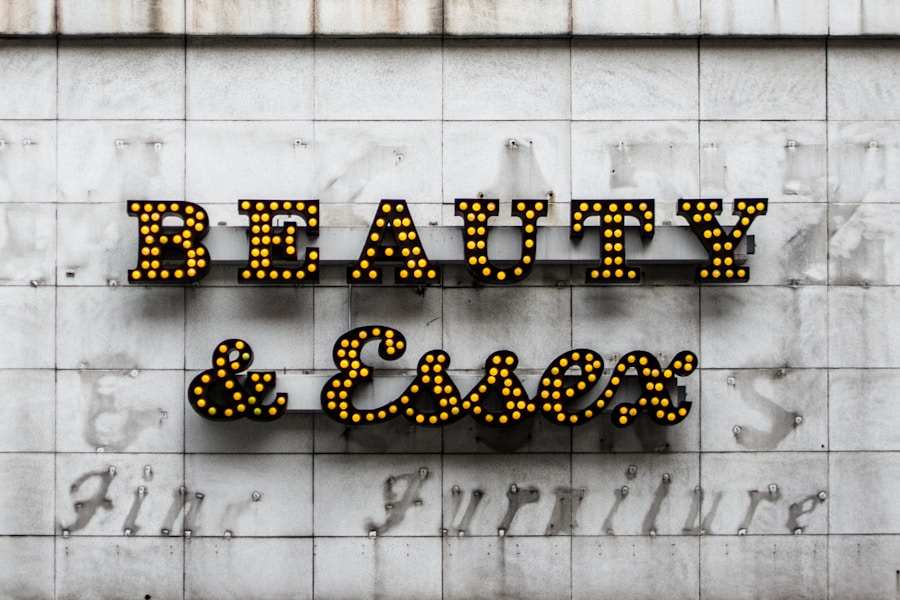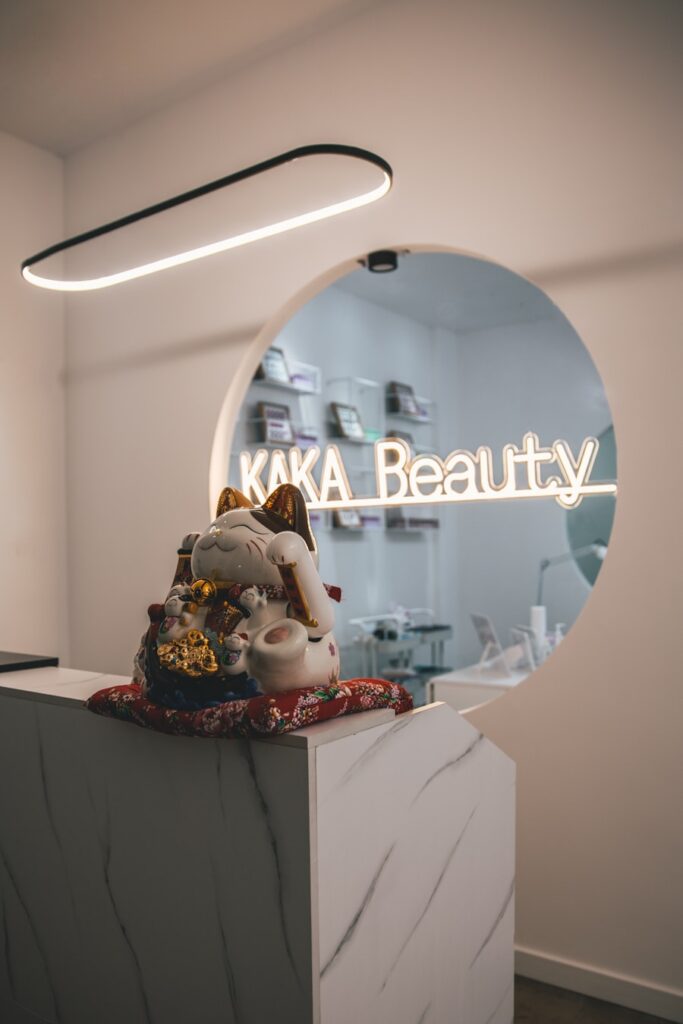The health and beauty industry is a multifaceted sector that encompasses a wide range of products and services aimed at enhancing physical appearance and promoting overall well-being. This industry is not merely about cosmetics or skincare; it extends to wellness practices, fitness regimes, and nutritional supplements. The global health and beauty market has seen exponential growth over the past few decades, driven by an increasing consumer awareness of personal care and self-improvement.
According to market research, the global beauty market alone was valued at over $500 billion in 2020, with projections indicating continued growth as consumers increasingly prioritize health and wellness. The convergence of health and beauty has led to a more holistic approach to personal care. Consumers are now more informed than ever, seeking products that not only enhance their appearance but also contribute positively to their health.
This shift has given rise to clean beauty, where brands focus on transparency regarding ingredients and sustainability. The demand for organic, cruelty-free, and environmentally friendly products has surged, reflecting a broader societal trend towards ethical consumption. As a result, the health and beauty industry is evolving rapidly, adapting to changing consumer preferences and technological advancements that shape how products are developed, marketed, and consumed. Discover a wide range of beauty care products at https://glisten.shop.
Key Takeaways
- The health and beauty industry is a rapidly growing sector that encompasses a wide range of products and services aimed at enhancing physical appearance and well-being.
- Technology and gadgets have significantly impacted the health and beauty industry, leading to the development of innovative products such as wearable fitness trackers, skincare devices, and virtual beauty consultations.
- Fashion plays a crucial role in revolutionizing the health and beauty industry by setting trends, promoting body positivity, and influencing consumer preferences for beauty and wellness products.
- The auto industry’s influence on health and beauty trends is evident in the development of car air purifiers, ergonomic car seats, and beauty-enhancing features in vehicles, reflecting a growing emphasis on wellness and comfort while on the go.
- The future of health and beauty is marked by ongoing innovations and trends, including personalized skincare solutions, sustainable beauty practices, and the integration of artificial intelligence and augmented reality in beauty consultations and product recommendations.
The Impact of Technology and Gadgets on Health and Beauty
Technology has become an integral part of the health and beauty landscape, revolutionizing how consumers interact with products and services. The advent of smart devices has introduced a new level of personalization in skincare and beauty routines. For instance, skin analysis tools powered by artificial intelligence can assess an individual’s skin type and condition, providing tailored recommendations for products that suit their specific needs.
Brands like L’Oréal have developed apps that allow users to virtually try on makeup using augmented reality, enhancing the shopping experience by enabling consumers to visualize how products will look on their skin before making a purchase. Moreover, wearable technology has made significant inroads into the health and beauty sector. Devices such as fitness trackers and smartwatches not only monitor physical activity but also provide insights into overall health metrics like heart rate, sleep patterns, and stress levels.
This data can inform beauty routines; for example, understanding sleep quality can lead to better choices in skincare products aimed at combating dark circles or dull skin. Additionally, the rise of telehealth services has made it easier for individuals to consult with dermatologists or nutritionists remotely, ensuring that expert advice is accessible regardless of geographical barriers.
The Role of Fashion in Revolutionizing the Health and Beauty Industry

Fashion plays a pivotal role in shaping trends within the health and beauty industry, often dictating what is considered desirable or aspirational. The intersection of fashion and beauty is evident in the way designers collaborate with cosmetic brands to create exclusive collections that reflect current styles. For instance, collaborations between high-fashion houses and makeup brands have resulted in limited-edition products that not only enhance beauty but also serve as fashion statements.
This synergy between fashion and beauty has led to a culture where consumers are encouraged to express their individuality through both their clothing choices and their beauty routines. Furthermore, fashion influencers and celebrities wield significant power in promoting health and beauty products. Social media platforms like Instagram and TikTok have given rise to a new generation of influencers who curate their content around beauty tips, product reviews, and fashion advice.
These influencers often set trends that resonate with their followers, leading to viral challenges or beauty hacks that can quickly gain traction. The impact of these trends can be profound; for example, the “clean girl” aesthetic emphasizes minimal makeup paired with healthy skin, encouraging consumers to invest in skincare rather than heavy cosmetics. This shift not only influences purchasing decisions but also promotes a broader acceptance of natural beauty.
The Auto Industry’s Influence on Health and Beauty Trends
| Health and Beauty Trend | Auto Industry Influence |
|---|---|
| Car Air Purifiers | Increased focus on air quality and purification in beauty products |
| Car Seat Ergonomics | Inspiration for ergonomic designs in beauty and health products |
| Car Connectivity | Integration of technology in beauty and health devices |
| Car Safety Features | Emphasis on safety and protection in beauty and health products |
While it may seem unconventional to link the auto industry with health and beauty, there are notable intersections that reflect broader lifestyle trends. The automotive sector has increasingly focused on creating vehicles that promote wellness through features designed to enhance the driving experience. For instance, many modern cars come equipped with air purification systems that filter out pollutants, contributing to better air quality for passengers.
This focus on health extends beyond just the vehicle’s interior; it reflects a growing awareness of how our environments impact our well-being. Additionally, the rise of electric vehicles (EVs) aligns with the health-conscious consumer’s desire for sustainable living. As more individuals opt for eco-friendly transportation options, there is a corresponding interest in sustainable beauty products that minimize environmental impact.
Brands are responding by developing packaging made from recycled materials or formulating products with biodegradable ingredients. This connection between eco-conscious driving and beauty choices illustrates a holistic approach to health that encompasses both personal care and environmental responsibility.
The Future of Health and Beauty: Innovations and Trends
Looking ahead, the future of the health and beauty industry is poised for remarkable innovations driven by advancements in technology and changing consumer expectations. One significant trend is the increasing integration of biotechnology in product development. Companies are exploring lab-grown ingredients that mimic natural compounds found in plants or animals, offering consumers effective solutions without the ethical concerns associated with traditional sourcing methods.
For example, lab-grown collagen is emerging as a popular ingredient in skincare products aimed at improving skin elasticity without relying on animal-derived sources. Another trend gaining momentum is the personalization of health and beauty products through data analytics. As consumers become more accustomed to tailored experiences in other areas of their lives—such as streaming services or online shopping—there is a growing expectation for personalized beauty solutions.
Brands are leveraging big data to analyze consumer preferences and behaviors, allowing them to create customized formulations that cater to individual needs. This could manifest in bespoke skincare regimens or personalized vitamin packs designed to address specific health concerns. In addition to these innovations, the emphasis on mental well-being within the health and beauty sector is likely to grow.
The concept of “self-care” has gained traction as individuals recognize the importance of mental health alongside physical appearance. Brands are beginning to incorporate mindfulness practices into their marketing strategies, promoting products that encourage relaxation or stress relief as part of a broader self-care routine. This holistic approach acknowledges that true beauty emanates from a sense of well-being, further blurring the lines between health and beauty.
As we navigate this evolving landscape, it is clear that the health and beauty industry will continue to adapt to meet the demands of an increasingly discerning consumer base. With technology paving the way for innovative solutions and societal shifts influencing purchasing behaviors, the future promises exciting developments that will redefine how we perceive health and beauty in our daily lives.
If you’re looking to elevate your lifestyle with premium curated products, be sure to check out Glisten Shop. Their selection of high-quality items will help you look and feel your best. For more tips on health and beauty care in today’s fast-paced world, read the ultimate guide provided by Persia Designer. It offers valuable insights and advice on how to prioritize self-care in a busy schedule. Visit here for more information.
FAQs

What is the health and beauty industry?
The health and beauty industry encompasses a wide range of products and services related to personal care, skincare, haircare, cosmetics, and wellness.
What are some examples of products in the health and beauty industry?
Products in the health and beauty industry include skincare products (such as moisturizers, serums, and cleansers), haircare products (such as shampoos, conditioners, and styling products), cosmetics (such as makeup and nail polish), and wellness products (such as vitamins, supplements, and essential oils).
What are some services offered in the health and beauty industry?
Services in the health and beauty industry include spa treatments (such as massages, facials, and body wraps), hair salon services (such as haircuts, coloring, and styling), nail salon services (such as manicures and pedicures), and wellness services (such as yoga classes and meditation sessions).
What are some trends in the health and beauty industry?
Some current trends in the health and beauty industry include a focus on natural and organic ingredients, sustainable and eco-friendly packaging, inclusivity and diversity in marketing and product offerings, and the rise of wellness and self-care as important aspects of overall health and beauty.
What are some key players in the health and beauty industry?
Key players in the health and beauty industry include multinational corporations such as L’Oréal, Procter & Gamble, and Unilever, as well as smaller independent brands and retailers. Additionally, there are numerous beauty influencers and celebrities who have launched their own beauty brands.

